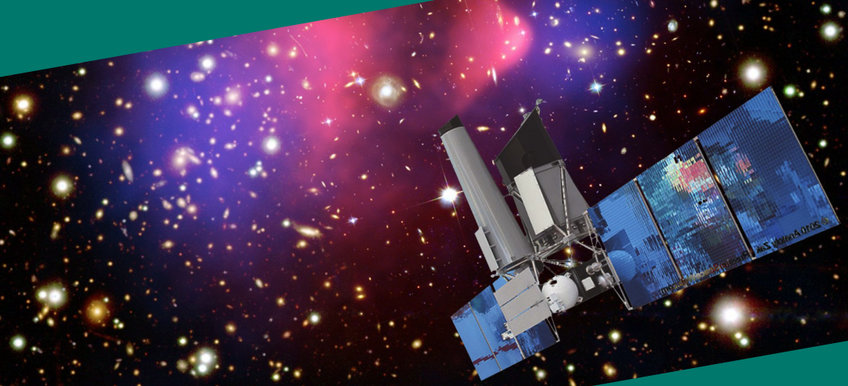
pnCCD detectors for eROSITA
Time-Resolved Spectroscopy and Imaging of X-Rays
We develop for the eROSITA X-ray space telescope an array of seven pnCCD focal plane cameras. The pnCCD detector system permits time-resolved spectroscopy and imaging of X-rays in the energy band from about 0.1 keV up to 15 keV. After production of the eROSITA pnCCD wafers in the MPG semiconductor laboratory, we measured the performance of the X-ray CCDs. Presently, we set up an engineering model of the eROSITA flight detector system.
The concept of the pnCCD was originally developed for the XMM-Newton mission [1]. The pnCCD detector performs continuously since 1999 excellent measurements onboard of the ESA satellite. The eROSITA pnCCDs are based on the same concept but various optimizations were implemented by means of design and technology improvements. The energy resolution was optimized for all energies and furthermore the new detectors permit spectroscopy even at energies down to 0.1 keV. A frame store was added to suppress out-of-time events and due to optimized manufacturing technology the occurrence of any pixel defects could be nearly eliminated [2].
A complete camera system was developed for performance characterization of the eROSITA CCD and its dedicated programmable analog signal processor chip CAMEX. This system serves furthermore for optimization of the supply and control flight electronics. Based on these results, the final design of the eROSITA CCD camera and its operating parameters are determined. Tests at external facilities were carried out for measurements of quantum efficiency and spectral response at the BESSY synchrotron and for radiation hardness studies at the TANDEM accelerator of the Maier-Leibnitz Laboratorium. The variety of experimental tests was completed by simulations, e.g. of the instrument background spectrum of eROSITA at L2 orbit with graded-Z-shield design of the cameras [3].



